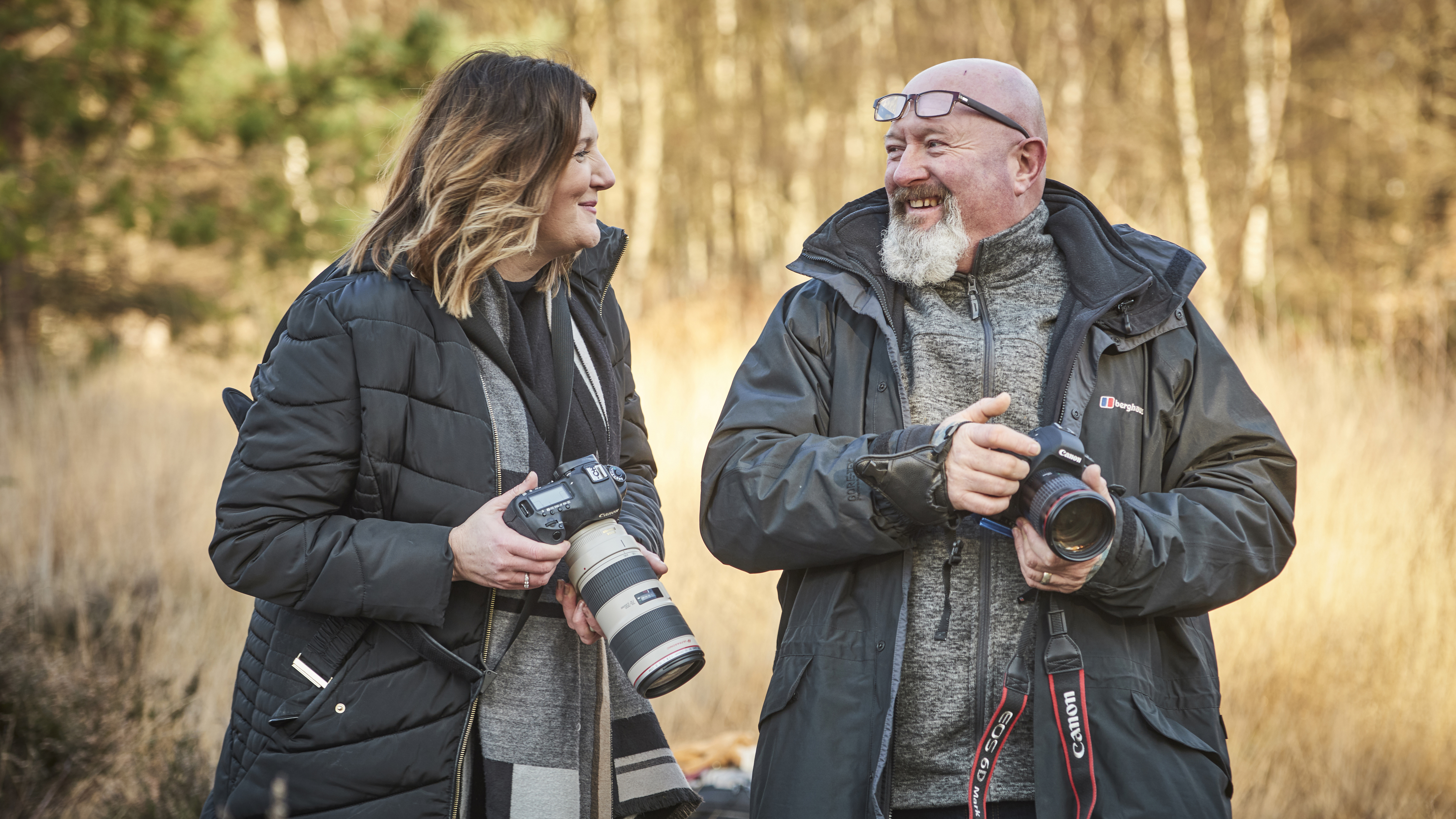Canon EOS R100 vs Rebel SL3
This Canon EOS R100 vs EOS Rebel SL3 comparison is the classic mirrorless vs DSLR camera debate!
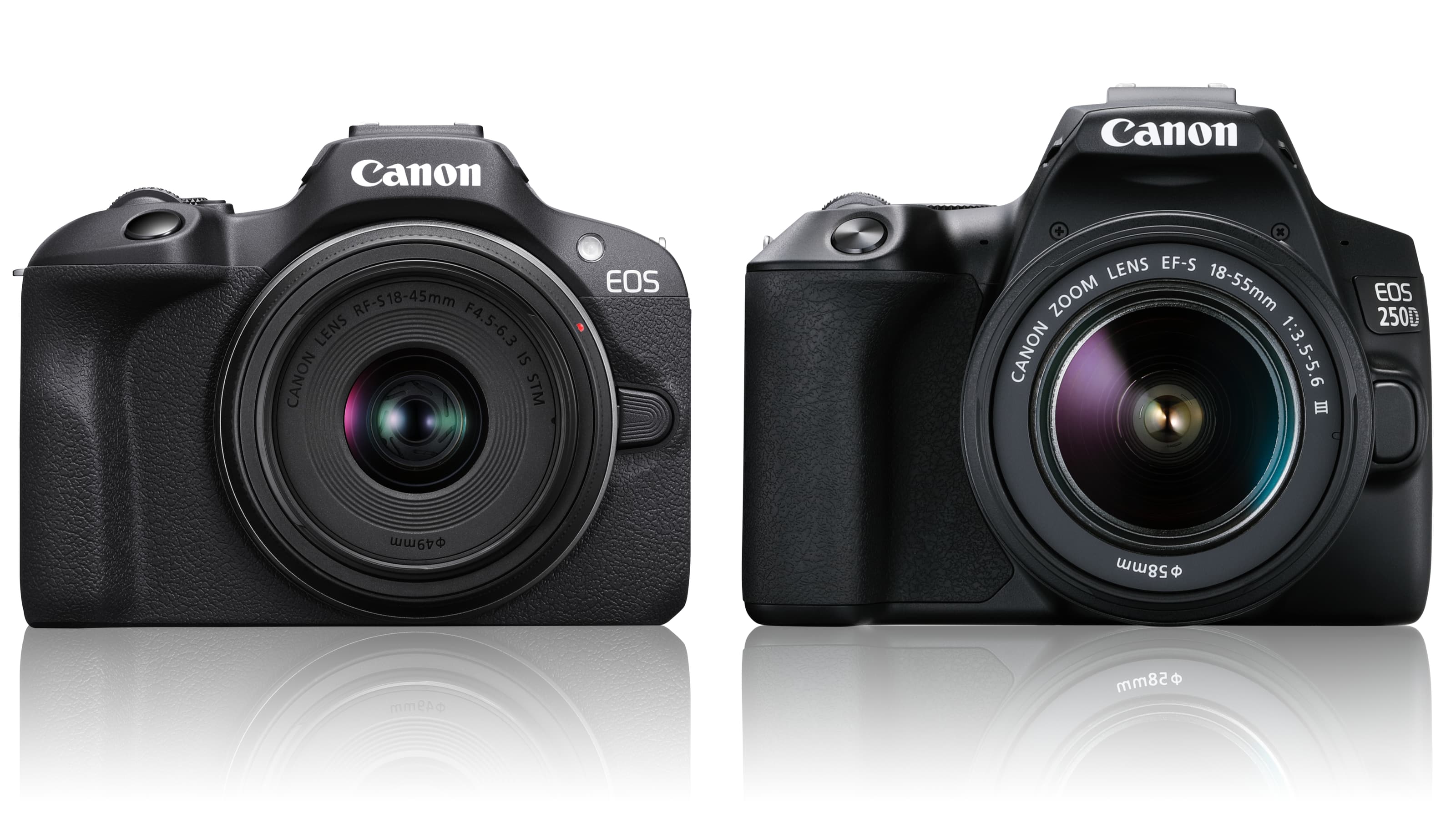
It’s a sign of how quickly things change in the world of cameras that the EOS Rebel SL3 (known as the EOS 250D in Europe and Australasia) already seems as if it belongs to a past generation. In fact, it was released as recently as 2019, and it shares a lot of the technology of the brand-new EOS R100.
So anyone looking for the best camera for beginners right now still has a genuine choice between a modern mirrorless design and a classic DSLR. Technically, these two cameras are surprisingly close, mostly because the EOS Rebel SL3 used Canon’s latest tech at the time, while the EOS R100 keeps down the cost by re-using much of it some four years later.
Both could tempt anyone looking for the best cheap camera right now, and while the EOS R100 is a little on the basic side to make our list of the best Canon cameras, we still consider the EOS Rebel SL3 a strong contender, and certainly one of the best DSLRs still available.
The EOS Rebel SL3 does currently cost a little more than the EOS R100, but has some features and capabilities that the EOS R100 doesn’t. So let’s take a closer look at these two cameras to see which one might be best for anyone just starting out in photography.
Canon EOS R100 vs EOS Rebel SL3 in 2023
Why you can trust Digital Camera World
1. Type
• Canon EOS R100: Mirrorless
• Canon EOS Rebel SL3: DSLR
The Canon EOS R100 is a mirrorless camera, which means the image is captured directly on the sensor in real time and relayed directly to either its electronic viewfinder or the rear screen. The EOS Rebel SL3 is a DSLR, which means it has a mirror in the body which directs the image up into an optical viewfinder right up until the moment of exposure, though it can also be used in ‘live view’ mode with the mirror flipped up, where the rear screen shows the image being captured by the sensor. Mirrorless cameras are more popular today but both types have their advantages, and you can find out more in our guide to DSLRs vs mirrorless cameras.
2. Lens mount
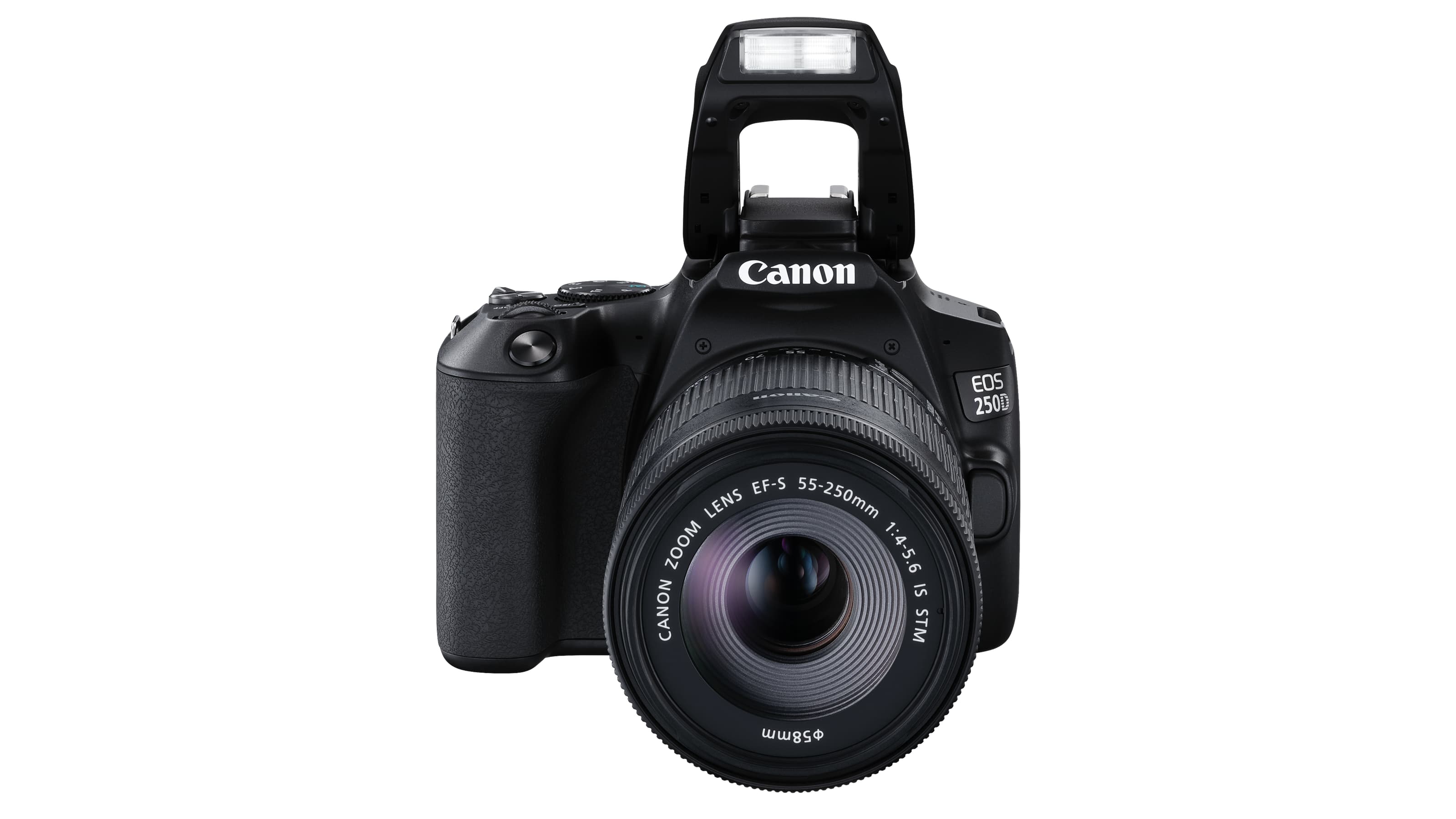
• Canon EOS R100: Canon RF-S
• Canon EOS Rebel SL3: Canon EF-S
The EOS R100 uses Canon’s latest RF lens mount, which it shares with the company’s full-frame mirrorless cameras. You can use full-frame RF lenses directly on the EOS R100, though the smaller sensor means there will be a ‘crop’ factor, and to get equivalent angles of view with standard and wide-angle lenses you really need RF-S format lenses designed for the smaller sensor, and at the time of launch the choice is pretty limited. Many of the best Canon RF lenses cost more than the EOS R100 itself.
The EOS Rebel SL3 uses Canon’s EF lens mount or, to be precise an EF-S version. You can mount full-frame EF lenses directly but, as with the EOS R100, you really need dedicated EF-S lenses designed for the smaller sensor for kit lenses and wide-angle lenses. The difference with the Rebel SL3 is that there’s wide-ranging support for the EF-S lens format both from Canon and third-party lens makers.
Check out the best Canon EOS Rebel SL3 lenses
3. Sensor
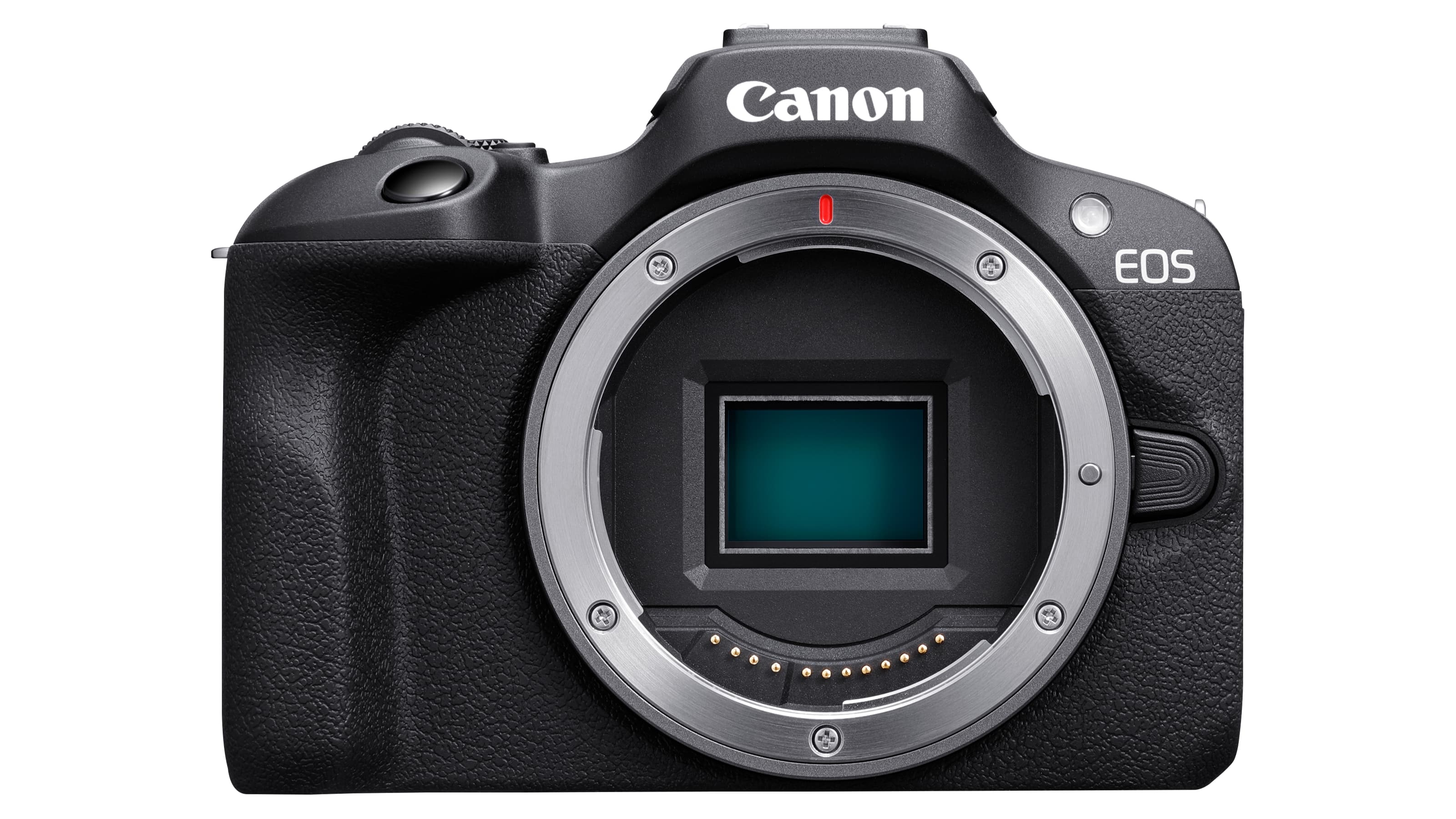
• Canon EOS R100: 24.1MP APS-C, DIGIC 8
• Canon EOS Rebel SL3 / 250D: 24.1MP APS-C, DIGIC 8
The sensor specifications for these two cameras are identical, both in terms of the sensor dimensions and the effective megapixels. Even the DIGIC 8 processor is the same, a sure sign that Canon is using its older tech in the EOS R100 to keep the costs down. You shouldn’t expect any difference in image quality from the cameras themselves.
4. ISO range
• Canon EOS R100: 100-12800, exp 100-25600
• Canon EOS Rebel: SL3 / 250D 100-12800, exp 100-25600
The ISO range is the same for both cameras, both in the standard and extended ranges. The sensor may be a few years old now, but it’s still capable of good quality at high sensitivities. Neither camera has an advantage here.
5. Autofocus
• Canon EOS R100: Dual Pixel CMOS AF, 3975 points, Humans (Eyes/Face/Head/Body)
• Canon EOS Rebel SL3 / 250D: OVF 9-point phase-detect, live view Dual Pixel CMOS AF, 3975 points, Face detection
One of the quirks of the DSLR design is that you get two autofocus systems not one. The EOS Rebel SL3 has a basic but effective 9-point AF sensor for viewfinder shooting, with focus points in the middle area of the image rather than right the way across. In live view mode, however, it switches. to the same Dual Pixel CMOS AF system found in the EOS R100.
Some people like the AF systems of DSLRs, and the Rebel SL3 does offer more advanced, wider-coverage AF in live view. On the other hand, the EOS R100 does provide an identical AF experience in both viewfinder and live view shooting. Canon also lists a wider range of human feature recognition types for this camera.
6. Continuous shooting
• Canon EOS R100: 6.5fps, 97 JPEG, 17-C-RAW
• Canon EOS Rebel SL3 / 250D: 5fps
The EOS R100 does have a slight speed advantage over the EOS Rebel SL3 for burst shooting, but this comes with a pretty limited buffer capacity that means the camera will slow down after a few seconds. Canon doesn’t quote the buffer capacity of the Rebel SL3, but with the same sensor and processor we would expect it to be similar. Both cameras can be used for burst shooting, but neither can keep it up for long.
7. Video
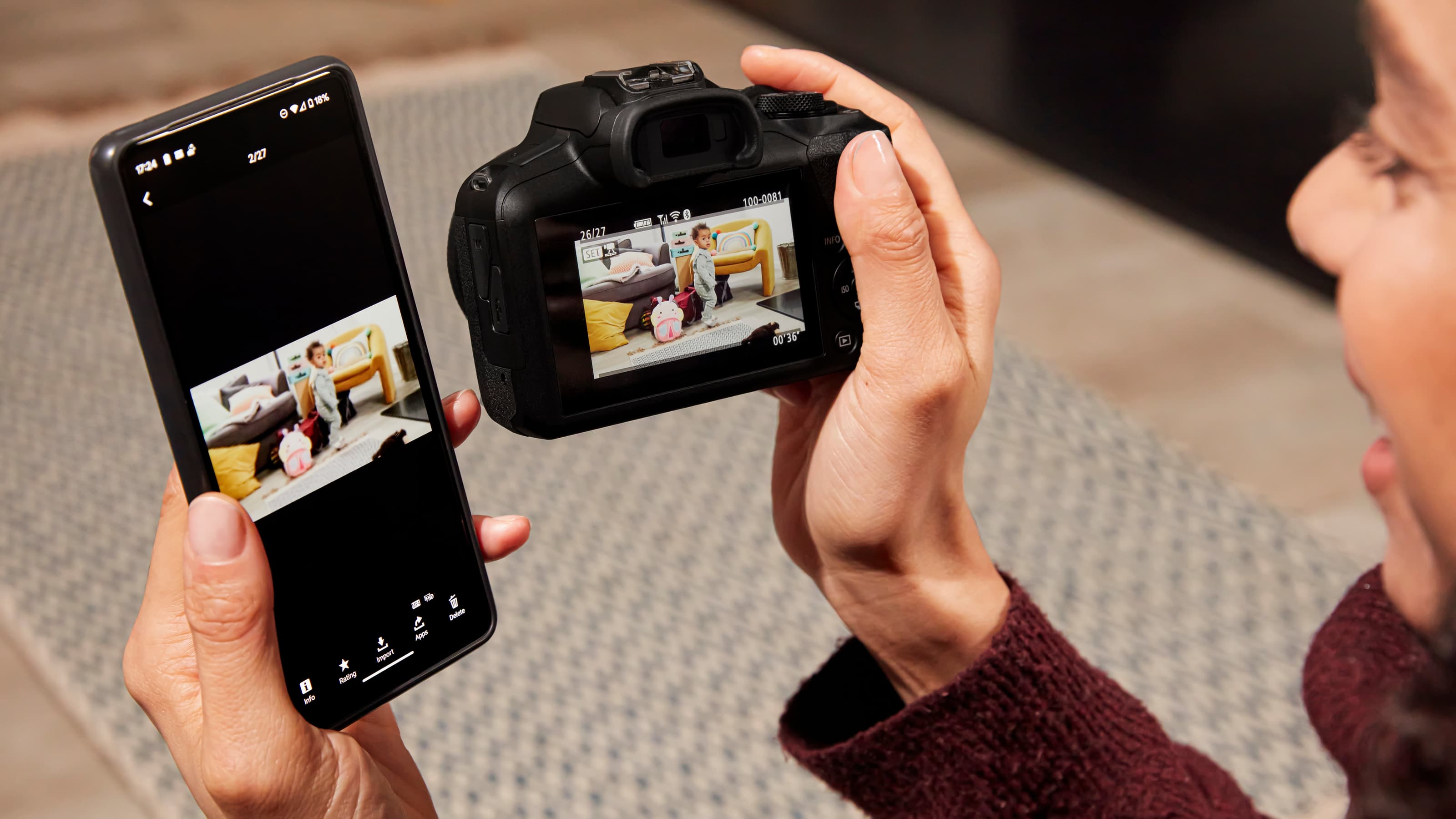
• Canon EOS R100: 4K UHD 25p, FHD 60p, HFR 120p HD
• Canon EOS Rebel SL3 / 250D: 4K UHD 25p, FHD 60p
Since they share the same previous-generation sensor and processor specs, it’s no surprise that they share the same limitations. On paper, they can shoot 4K video, but in practice it’s with a heavy crop that restricts your lens’s angle of view, and Canon’s speedy Dual Pixel CMOS is not available. If you don’t mind dropping to 1080 full HD resolution, you don’t get the same restrictions. Neither camera has an advantage here, and both look a step behind the latest mirrorless models like the EOS R50 or Nikon Z30.
8. Viewfinder

• Canon EOS R100: EVF, 0.39, 2.36m dots
• Canon EOS Rebel SL3 / 250D: OVF, Pentamirror, 95% coverage
The Canon EOS R100 has a 2.36 million dot electronic viewfinder, which is perfectly good enough at this price. The EOS Rebel SL3, however, has an optical viewfinder which gives a clear, ‘naked eye’ view of the scene rather than the digitized version on the EOS R100. However, the Rebel SL3 does not have the pentaprism design of more upmarket DSLRs. Instead, it uses a smaller and cheaper ‘pentamirror’ which is a little cramped by comparison.
9. Rear screen
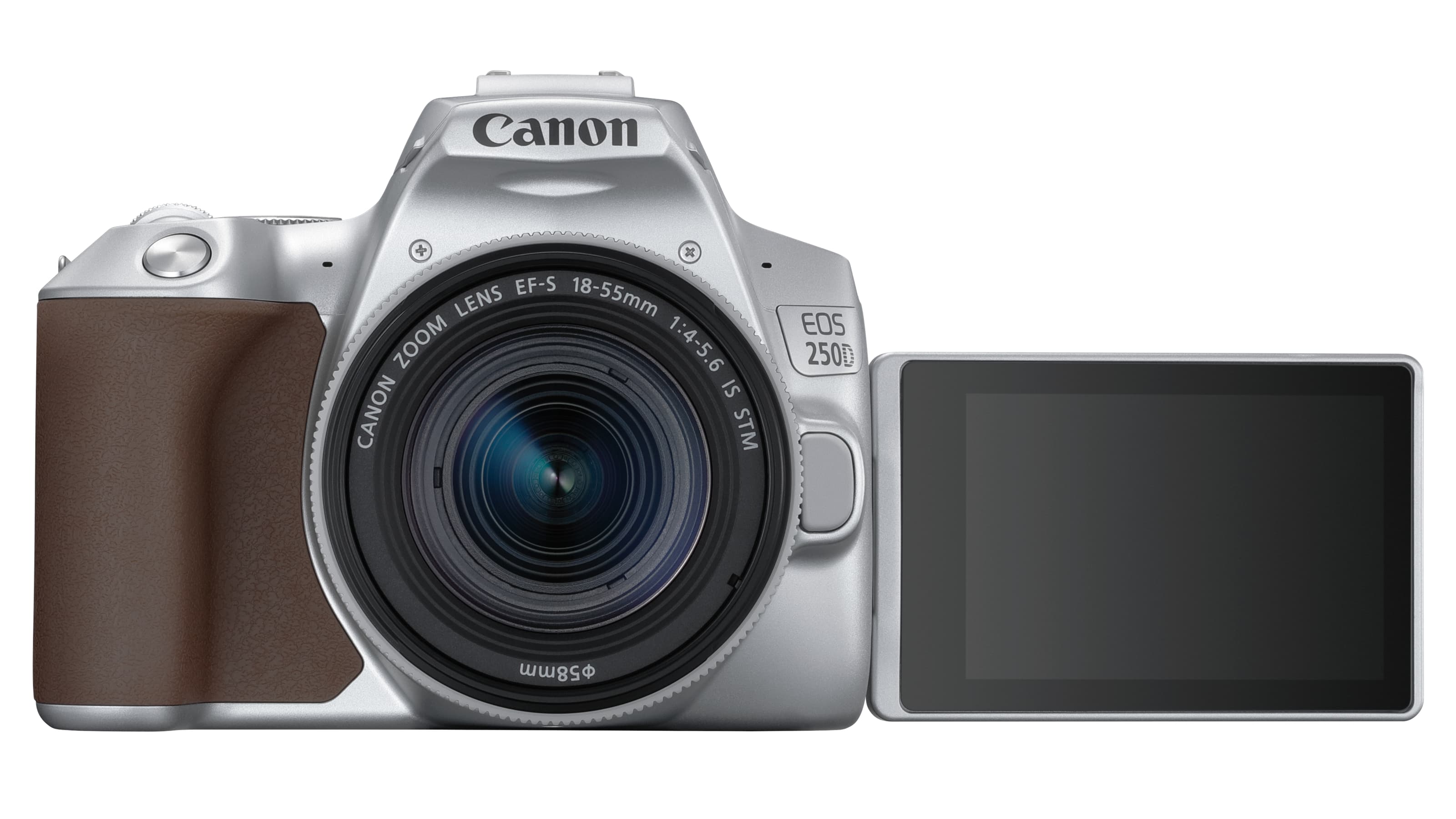
• Canon EOS R100: 3-inch fixed, 1.04m dots
• Canon EOS Rebel SL3 / 250D: 3-inch vari-angle, 1.04m dots
The EOS R100 and Rebel SL3 have very different viewfinder technologies, and there big differences round the back, too. They use the same 3-inch 1.04m dot display, but on the EOS R100 this is fixed in place, while the EOS Rebel SL3 has a vari-angle pivot. This makes the Rebel SL3 much more adaptable when shooting at difficult angles and especially for video, where the screen can be flipped forward for filming yourself. Even though the EOS R100 is a mirrorless camera, the older Rebel SL3 does have this advantage for video.
10. Battery life and storage
• Canon EOS R100: LP-E17, 430/340 shots
• Canon EOS Rebel SL3 / 250D: LP-E17, 320/1070 shots
Digital displays consume a lot of power, and this becomes very apparent when you compare the battery life for these two cameras – they use the same LP-E17 rechargeable battery, by the way.
In live view mode using the rear screen the EOS R100 has a considerable advantage, offering up to 430 shots on a single charge versus 320 shots for the Rebel SL3. But if you switch to viewfinder shooting, the EOS R100 drops to 340 shots while the Rebel SL3 rockets to 1070 shots, which is a clear advantage for all-day shooting.
Both cameras have a single SD memory card slot compatible with UHS I memory cards, so there’s no difference there.
11. Size
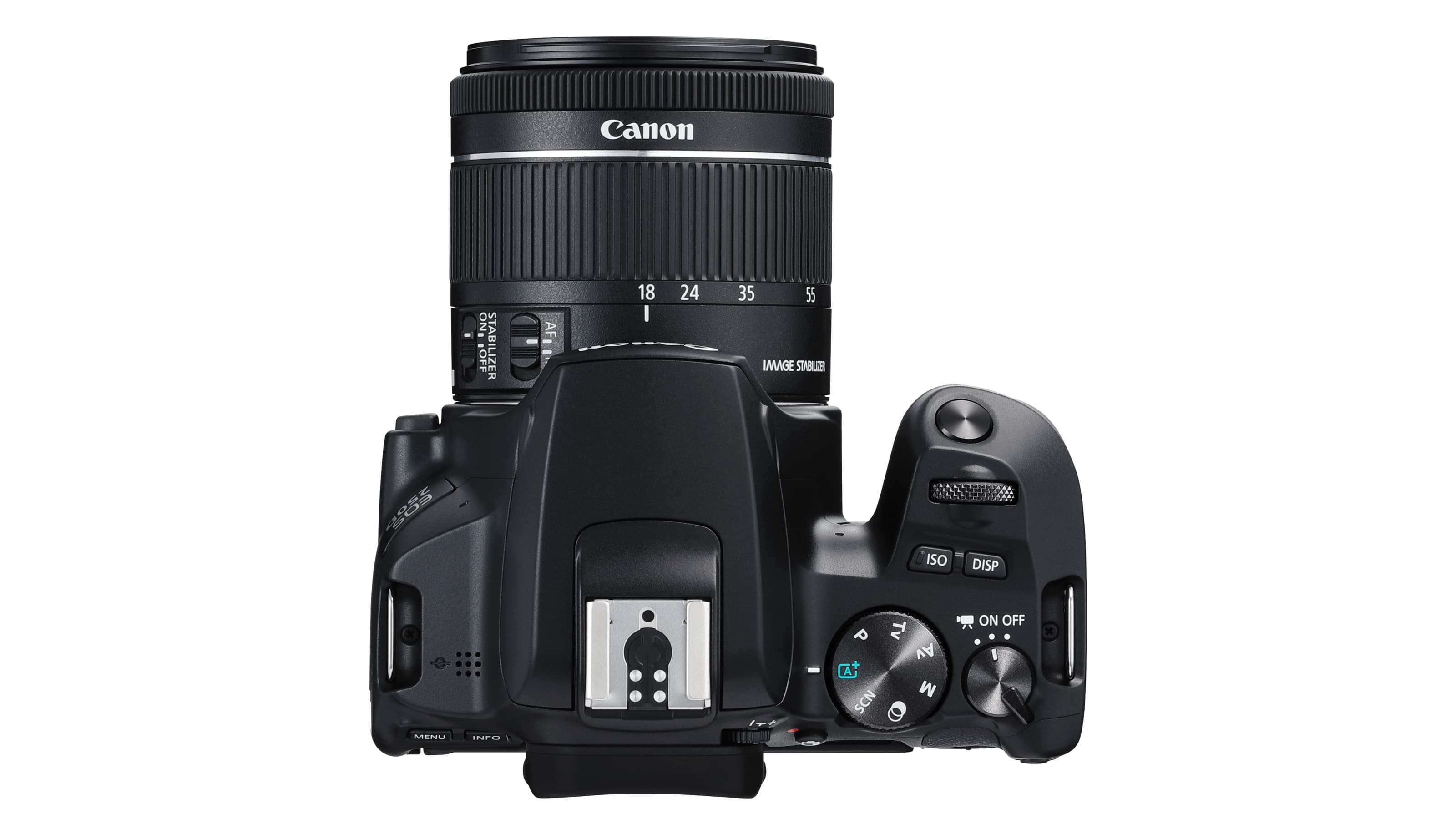
• Canon EOS R100: 116.3 x 88.1 x 58.7mm, 356g
• Canon EOS Rebel SL3 / 250D: 122.4 x 92.6 x 69.8mm, 449g
Not surprisingly, being a DSLR, the EOS Rebel SL3 is both bigger and heavier than the EOS R100, and that’s despite the SL3 being the smallest DSLR on the market. Much of the difference is due to the extra thickness of the body to accommodate the mirror used for the optical viewing system.
12. Price
• Canon EOS R100: $599 / £669
• Canon EOS Rebel SL3 / 250D: $749 / £769
If we compare the prices of both cameras with their standard kit lenses included, the Rebel SL3 costs around $150 / £100 more than the EOS R100. The price difference may change over time, once the EOS R100 has been on sale for a while. As to whether the Rebel SL3 is worth the extra, it is if you like an optical viewfinder and you need extra lenses beyond the kit lens. It also has a vari-angle screen.
Canon EOS R100 vs EOS Rebel SL3 / EOS 250D: conclusions

Canon has done very well to get the price of the EOS R100 as low as it has while still making a serviceable and effective camera with a good sensor. it does feel like the future, while the SL3 feels like one of the last of the old DSLR range.
Even so, right now, the Rebel SL3 is a little bit more versatile thanks to its vari-angle screen and access to a far wider range of lenses. (You can use the same EF-S lenses via an adaptor with the EOS R100, but it’s more of a temporary workaround than a long term solution.)
If the day comes when the EOS R100 has as many RF-S lenses to choose from as the Rebel SL3 has EF-S lenses, that would be enough to make the EOS R100 a clear winner. But that won’t happen any time soon, and it may never happen at all, so in the meantime, the Rebel SL3 is still a very compelling alternative. The EOS R100 might be the future, but we live in the present!
Get the Digital Camera World Newsletter
The best camera deals, reviews, product advice, and unmissable photography news, direct to your inbox!

Rod is an independent photography journalist and editor, and a long-standing Digital Camera World contributor, having previously worked as DCW's Group Reviews editor. Before that he has been technique editor on N-Photo, Head of Testing for the photography division and Camera Channel editor on TechRadar, as well as contributing to many other publications. He has been writing about photography technique, photo editing and digital cameras since they first appeared, and before that began his career writing about film photography. He has used and reviewed practically every interchangeable lens camera launched in the past 20 years, from entry-level DSLRs to medium format cameras, together with lenses, tripods, gimbals, light meters, camera bags and more. Rod has his own camera gear blog at fotovolo.com but also writes about photo-editing applications and techniques at lifeafterphotoshop.com
